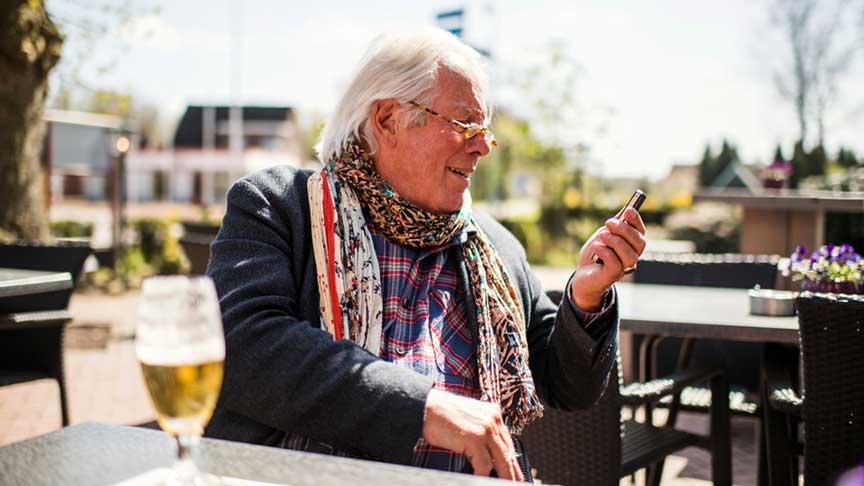In today’s digital and disrupted world, organizations require flexibility and empowerment rather than formality and rigidity. Agile leadership methods are necessary to ensure the organizational flexibility required to adapt to changing market demands. New perspectives on leadership are required to increase the capacity for collective commitment to face the increasing velocity of change.
However, innovative ways of working will be met with resistance unless the organization is itself designed to overcome the hardest part of change — facilitating mindset shifts.
What is Agile Leadership?
In a world that has become increasingly complex, stability poses a greater danger than change. As the lifespan of the average organization gets shorter, the pace of acquisitions faster, and the invention of replacement technologies more widespread, no ground is safe. The increase in data and connections, along with incessant creativity, only add to the complexity. Leaders around the world are recognizing that change is the only way to survive.
Agile leadership is demonstrated by individuals who welcome shifts in mindset, behavior, and culture, and who strengthen interconnections and sustainability across the people, organizations, and communities they lead.
As the boundaries that previously defined organizations are blurred, leaders will face significant challenges. To lead organizations successfully through such fundamental changes, leaders will need to embody an agile leadership mindset to lead into a new future.
Leaders must find ways to reimagine the future organization, speed up the execution on innovative projects, enhance collaboration across boundaries, and catalyze even greater creativity.
A Paradigm Shift: The Future Organization Is Driven by Agile Leadership
No matter how well leaders adapt to technological and social shifts, they will find themselves constrained by the structures of their internal organizations unless those structures evolve. Therefore, a shift is required to redefine how we think about and evolve agile leadership: from top-down to transversal, from process to system, from autocratic to democratic, from evolution to ecology.
Future-focused, agile organizations and their networks of contributors will not be controlled by a formal hierarchy, but will instead work together to invent ways to accomplish a common purpose. Innovation will be enabled more by sharing knowledge and assets than by exclusive ownership.
The leadership challenges in evolving organizations are significant. The need for a magnetizing purpose highlights the importance of a bold vision. Shifting from risk minimization to acceptance of wider creativity and ambiguity will necessitate new levels of trust. The leaders who attract people around a common goal will be the ones who bring society together for collective impact.
Agile leadership crosses the traditional boundaries preventing systemic collaboration. Empowered actions enabled by information transparency democratizes ways of working, flooding the dated dependencies of hierarchy with openness and trust.
Using agile leadership methods and approaches can amplify the power of teams. It’s also important to know how to achieve alignment through improved dialog characterized by critique and candor, which influences the culture of the organization.
The Capabilities Required for Agile Leadership
6 Ways to Become More Future-Fluent
To lead organizations successfully through such fundamental changes, leaders will need to be future fluent: embodying a mindset, a skillset, and the capability to lead into a new future. At a minimum, leaders need to grow the capabilities of agility, resilience, and perspective. According to our CCL research and experience with global leaders, we identify many additional attitudes, including the ability to:
1. Seek fresh perspectives.
Using predictive AI, analytics, scrum methods, sprints, daily standups, visible progress boards, and other agile tools and methods to inspire the direction towards speed and effectiveness from the resources at their disposal, leaders engage directly in real-time solution creation to respond to new customer challenges.
2. Be data-driven.
Data provides clarity on collaboration and intelligence for innovation and dynamic decision-making. It raises awareness to enable collaboration, drive costs, and transform cultures.
3. Harness analytics.
Seeing the data connections among disparate events is increasingly important in setting strategic direction, since responding incoherently to independent “signals” leads to overload rather than progress.
4. Maintain resilience.
Leaders must remain aware of their own emotional stability, mindful not to succumb to drowning in attempts to analyze everything. Staying buoyant is essential, as the tide will tend to ebb and flow.
5. Embrace constant change.
In today’s rapidly changing world, where plans can soon be tossed out the window, leaders must rely on fluid roles and contributions from people who come together in different configurations to get work done.
6. Design for reuse.
Leaders set the stage for people to step outside the confines of traditional fixed organizational structures. They must support their them through periods of confusion on the way to achieving breakthroughs.
Agile Leadership Is Faced With New Demands
Executing agile leadership requires plenty of effort — roles, organizational systems, leadership approaches, and even rewards and recognition must change. Leaders will need to have strong convictions about the power of collaboration. They will need to lead with inspiring visions of change for the future — visions that empower teams to act differently and connect much more widely than was previously demanded.
If leaders aim to develop organizations to realize shared value, they must help cultivate the energy, creativity, and abilities of the people engaged. They are responsible for seeing that organizations set missions with meaning, and then accomplish them. They must insist that people in organizations work across boundaries, both inside and outside, in order to grow from diversity and cultivate the community. They have to make certain that people learn and make use of that learning to inform timely and effective decision-making. Leaders must know when to step in and when to step back. They enable people to be empowered to assume leadership at the right time, for the right reasons.
Learn more about the mindset shifts required for engaging in agile leadership and guiding your organization into a new future by downloading our white paper below.
Download White Paper
Download this white paper to discover the shifts in mindset, behavior, and culture required for agile leadership, and ways organizations are successfully implementing new strategies to prepare for the future.












